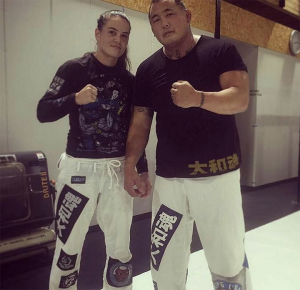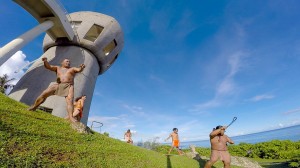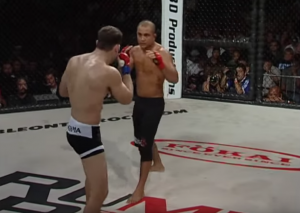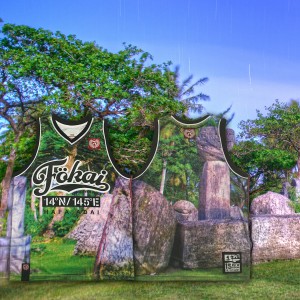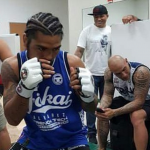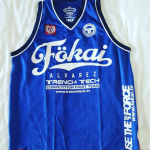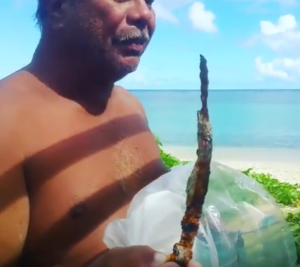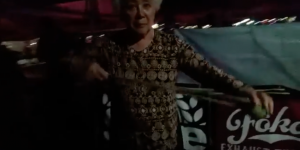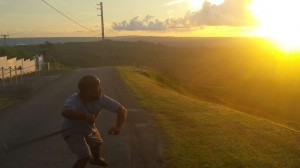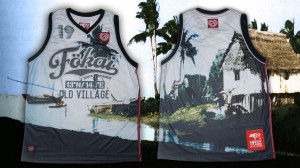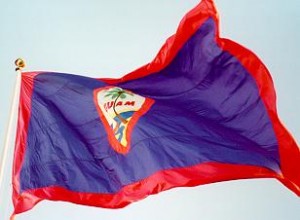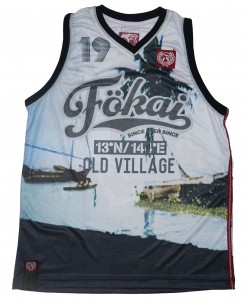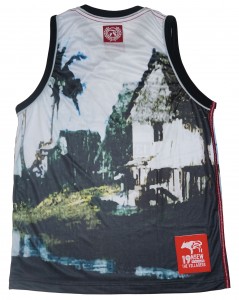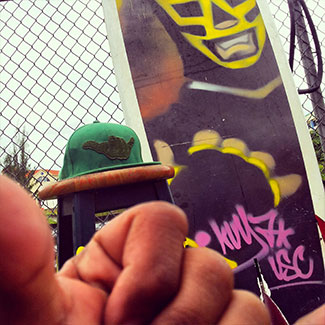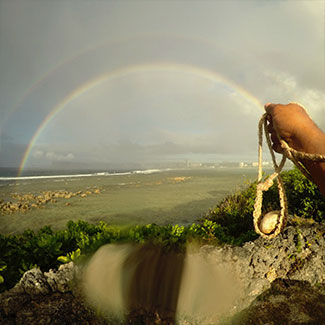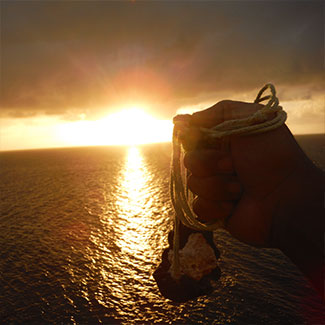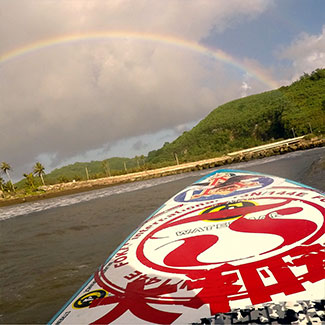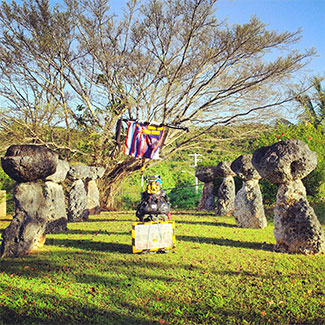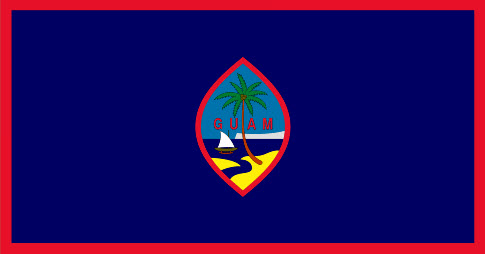Share JiuJitsu w/ Sara & Enson Inoue
September 23, 2016 by admin
Filed under Special Forces
From a perspective of a jiujitsu follower and fan for many years–This photo can speak volumes.
The jiujitsu Enson Inoue was cultivated in a time when Jiujitsu was catered for full contact fighting and self defense. Sarah McCan came into jiujitsu where competitive BJJ as sport has stormed a receiving world with rules and guidelines that have given more breathing room to develop the incredible physics in the ridiculously abundant and growing variations and techniques that we see in Jiujitsu today.
His kimono was used in Pride FC and baptized in legendary battles her kimono was created in an atmosphere of die-hard kimono collectors and a thriving jiujitsu kimono industry.
BJJ sure has changed and though People might have their questions for jiujitsu today vs. Jiujitsu yesterday but throughout–its all jiujitsu.
Were honored to be apart of this past,present, and future of jiujitsu
Thanks Tatami Fightwear for this fine item.
#yamatodamashii
#fokai
#sharejiujitsu
Guelo Slinging Tutorial Capitol F (Acho Atupak) // The Fokai Shop Agana
September 12, 2016 by admin
Filed under Special Forces
Guelo Slinging Tutorial Capitol F (Acho Atupak) // The Fokai Shop Agana. How to use a Chamorro sling also known as Acho Atupak.
B.J.Penn vs. Rodorigo Gracie RUMBLE ON THE ROCK Nov 20 2004
September 1, 2016 by admin
Filed under Special Forces
B.J.Penn vs. Rodorigo Gracie RUMBLE ON THE ROCK Nov 20 2004
The Prodigy:
First to bring the blackbelt gold Pacific Islanders in Jiujitsu competition, and first and only man to hold titles in two UFC weight classes–BJ Penn has been paving the way for Hawaiians and all other Pacific Islanders in MMA and Jiujitsu competition.
Richard Chou, we are stoked, honored, and proud to have worked with this good man, his family, close friends, and people with Rumble on the Rock.
Keeping the faith. Sinceeversince
#islanders
#hafaadaiandaloha
#fokai50
The Legend of Taga! FOKAI VOYAGER: “ROOTED” TINIAN BY JOSE QUAN
July 22, 2016 by admin
Filed under Special Forces
The Legend of Taga! FOKAI VOYAGER: “ROOTED” TINIAN BY JOSE QUAN
The House of Taga (Chamoru: Guma Taga) is an archeological site located near San Jose Village, on the island of Tinian, Commonwealth of the Northern Mariana Islands (CNMI), in the Marianas Archipelago. The site is the location of a series of prehistoric latte stone pillars which were quarried about 4,000 feet (1,200 m) south of the site, only one of which is left standing erect due to past earthquakes. The name is derived from a chief named Taga, who is said to have erected the pillars as a foundation for his own house.
The prehistoric latte stone pillars (also called taga stones) at House of Taga stood 15 feet (4.6 m) high, and were quarried about 4,000 feet (1,200 m) south of the site. The original megaliths consisted of a base (haligi) and a hemispherical cap (tasa). When uprighted in spaced parallel rows, it is believed a house was built on top. Of the twelve upright stones sketched by British explorer George Anson during his 1742 visit to Tinian, only one remains standing. The As Nieves Rota Latte Stone Quarry is believed to be the Marianas origin of the period of these megalith structures.
Legend of Chief Taga and his house
One variation on that story also puts Taga’s origins at Guam. As a child, he began demonstrating such super-human strength that his own father was jealous and tried to kill him. Taga escaped from his father by jumping off a cliff on Guam and landing on Rota, almost 50 miles (80 km) away. On Rota, Taga grew to adulthood and became a braggart about his prowess. According to the legend, it was Taga who began the As Nieves Quarry on Rota and abandoned it for reasons that are unclear.
Taga married and had a family, and they sailed to Tinian. His reputation had preceded him, and the chief of Tinian presented several challenges to test Taga’s strength. The chief was subsequently so impressed with Taga’s abilities that he named Taga the chief of the island. Taga carved the latte stones to single-handedly build his Tinian house and a village for his people. He carried the multi-ton pillars all by himself. As the years passed, while on a trip to Saipan, Taga’s wife gave birth to a son that Taga bragged about to no end. Taga’s brother tired of all the bragging and challenged Taga to a contest, which ended in a draw between the two brothers. This was the end of Taga’s bragging.
Eventually, Taga and his wife were the parents of twelve children. When Taga realized that his youngest son had greater strength than he, Taga flew into a jealous rage and murdered his son. Taga’s wife died of grief. His youngest daughter then speared Taga to death and died of a broken heart. As each of Taga’s twelve children died, their spirits inhabited the latte stones of his house. Each spirit was released by the individual latte stone falling to the ground. The lone standing megalith today is said to imprison the spirit of the daughter who murdered Taga.
FAMILIA, THE FORCE, & THE FIGHTING ISLANDS | The Alvarez Family
July 12, 2016 by admin
Filed under Special Forces
FAMILIA, THE FORCE, & THE FIGHTING ISLANDS
The Alvarez Family that once highlighted motocross events across Micronesia for decades since the 80′s has moved onto new things.
Setting the Foundation for MMA athletics in the CNMI-From the #FokaiThrottleProject and the Alvarez Racing Team to their more-than-a-decade-strong reign in outer island MMA, Fokai is proud to have joined them with TrenchTech/Purebred Saipan and Trench Warz on their long course journey
#clothandculture
#sinceeversince
#itsafamilyrhing
EVERYDAY PEOPLE // Joseph Aguon
July 9, 2016 by admin
Filed under Special Forces
EVERYDAY PEOPLE
Joseph Aguon has been picking up hazardous materials from the waterfront at Ypao Beach to save people and families from unnecessary injury and for other good reasons.
He was featured in Guam media last week where he discovered a live grenade in a high foot traffic are on one of our most populated beaches unearthed by severe rains that eroded sand.
He has been doing this daily since January, without pay nor solicitation of pay and has no intention of slowing down
#teamwork
#defendguahan
#theforce
VIDEO: Yoshiko San Nicolas, 75 years old: Share Culture: Sling&Sword
June 1, 2016 by admin
Filed under Special Forces
Yoshiko San Nicolas, 75 years old: Share Culture: Sling&Sword
Yoshiko San Nicolas, 75 years old and a survivor of the bombing of Nagasaki during World War 2 on an amazing first three tries with pre-colonial Guam’s signature weapon — The Acho (Stone) Atupat (Sling)
Chamorro Slinging | Acho Atupat
May 19, 2016 by admin
Filed under Special Forces
The sling and sling stone have been a part of Chamorro History between 1500 years to 3500 years depending on who you talk to. As a citizen under the only national flag of the world with a sling stone–I’ve been fascinated with slinging for a really long time now. But like most other locals, was happy enough putting it on a pedestal and out of reach. Because it was so iconic for our ancestors and for the Biblical David.
Im pursuing the art for different reasons–Chamorro People Honorification, Culture Sharing, and Versus Goliath.
For every aspect of culture and language that I am slacking on-slinging is something that i can help bring to our people’s table
- Roman DLC
Article By Julian Aguon of Guampedia
Signature Chamorro weapon Åcho’ Atupat
The signature weapon of the ancient Chamorro warrior, slingstones of various sizes were sharpened at both ends and hurled from a sling with deadly force in combative times. These stones, called åcho’ atupat in the indigenous language of Chamorro, were fashioned from either limestone, basalt, or fire-hardened clay and were hung from slings of made of pandanus or coconut fiber, the latter being far better by way of durability.
The most notable aspect of these most oftentimes oval-shaped stones were that ancient Chamorros used them with deadly accuracy as documented in historical texts. Though commonly associated with weaponry of the Latte period, these stones were used in early colonial history as the arms of resistance to Spanish colonization, hurled at the harbingers of that particular destruction. A prized art of warfare, the knowledge of how to fashion and hurl these stones was kept in the men’s domain and was passed down from older to younger males, most likely from father to son, or mother’s oldest brother to son.
Today, the sling-stone shape is part of the design of the official Guam flag and is incorporated into architectural designs. Like the latte the slingstone is a cultural icon used in Guam’s contemporary pop culture (in tattoo and clothing designs) to exhibit Chamorro pride and cultural identity.
Keenan Cornelius back to Guam with his first lesson in Guam’s native and trademark weapon, the sling.
Keenan Cornelius Slinging on Guam
HAFA ADAI,THE FORCE & THE MARIANAS OPEN!
Frank the Crank Camacho welcomes Keenan Cornelius back to Guam with his first lesson in Guam’s native and trademark weapon, the sling.
Good Vibrations and Culture Sharing with Keenan
#jiujitsuinparadise
#theforce
ROOTS: Fokai OLD VILLAGE REAL FLAG TANK! Where the Guam Flag was designed.
May 11, 2016 by admin
Filed under Special Forces
ROOTS: Fokai OLD VILLAGE REAL FLAG TANK! Where the Guam Flag was designed.
Get your Fokai OLD VILLAGE REAL FLAG TANK here!
The Great Seal of Guam by: ns.gov.gu
The blueprint shows a tree and proa (canoe) in front of a silhouette of Urunao (It is not Two Lover’s Point, see below) and specifies the flag’s colors. There are several possible inspirations of the flag’s design, including a photograph from Gov. Robert E. Coontz’s collection from 1912, and the works of local artist Francisco Feja and Helen Paul, the wife of a U.S. Navy officer.
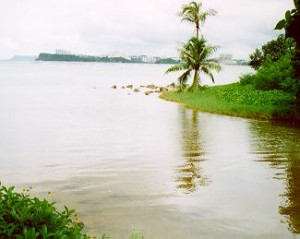 On July 4, 1917, Gov. Roy C. Smith approved the plan, and two days later, the flag was unveiled for the first time at a Hagåtña parade.
On July 4, 1917, Gov. Roy C. Smith approved the plan, and two days later, the flag was unveiled for the first time at a Hagåtña parade.
Taken from the center portion of the Guam Flag, Governor Roy C. Smith approved the design as the “Official Coat of Arms” for the territory of Guam on July 4, 1917. April 4, 1930 was the formal adoption date of the official Seal of the Territory of Guam, under the administration of Governor Willis W. Bradley Jr. who changed it from one with an eagle on it.
The Seal was designed in the city of Agana from a scene where the diverted Agana River formerly empties into the Philippine Sea in a spot to the left or south side of the Navy Yard Reservation. The ‘Landing’ at the end of the present day Hagatna Boat Basin Channel was where the Navy Yard used to be (from interview with Dr. Lawrence Cunningham). Following a disastrous typhoon which left only a coconut tree standing, this setting inspired the design for the official Seal of Guam. The shape of the Seal represents the shape of the slingstone which the ancient Chamoru warriors employ as an implement for defense. That iconic shape cradles and protects the rest of the features within the seal. At the heart of the seal is the coconut growing in the unfertile sand which depicts determination. Although partly uprooted during the recent typhoon, as if in utter defiance to all adversities, this tree with trunk partly bent, turned its open fronds to receive illumination from the heavens and continue its growth.
According to the Organic Act of Guam 1GCA, Chapter 4, Sections 410 and 411, “The Lieutenant Governor of Guam shall have custody of the Great Seal of the territory of Guam,” thus the Lieutenant Governor is the official “keeper” of the Seal.
DESCRIPTION OF THE FLAG’S SYMBOLS: The shape of the seal is that of a Chamorro sling stone used as a weapon for warfare and hunting. The sling stone was quarried from basalt and coral. The Coconut Tree, growing in unfertile sand, symbolizes self-sustanance and determination to grow and survive under any circumstance, with its fronds open to the sky — defies the elements to bend its will. Its bent trunk attests to a people which have been tested by famine, natural calamities, genocide and foreign wars but have continued to endure as a race. The Flying Proa, a seagoing craft built by the Chamorro people, which was fast and agile in the water required great skill to build and sail. The spanish marveled at the grace and speed of the proa which typifies the courage and freedom of the ancient Chamorros to fearlessly navigate and trade with islands thousands of miles from Guam. The original River channel (south side of present day Hagatna Boat Basin Channel), where fresh water rush out to interact with the ocean, symbolizes a willingness to share the resources of the land with others. The permanence of the land mass of Urunao (Ulu Enao) in the background (Rogers, Robert. Destiny’s Landfall. 1995 Univ of Hawaii Press. pg 142) demonstrates the Chamorro’s commitment to their homeland and environment, be it sea or land. The historian Pale Eric Forbes (http://paleric.blogspot.com)has written that the background of the seal is not Puntan Dos Amantes (aka Two lovers point, Cabo de Dos Amantes, Pt Desamante (from William Edwin Safford, Rev. Jose Palomo Y Torres, R.P. Tolman 1904 map)). Father Eric Forbes has stated that one cannot see Two Lover’s Point from Hagatna since Oka Peninsula (near Apurguan) blocks Hagatna’s view of the Two Lover’s Point. The background cliff juts majestically into the endless waters of the sea, protraying the people’s faithful commitment to passing their proud heritage, culture, and language to the endless sea of future generations. GUAM or GUAHAN means “we have” (see *notes below) is the home (“Tano Y Chamoru”) of the Chamoru people. A red stripe surrounding the Guam Seal representing the blood shed by its people during World War II and Spanish occupation. A field of Blue represents Guam’s unity with the sea and sky.

